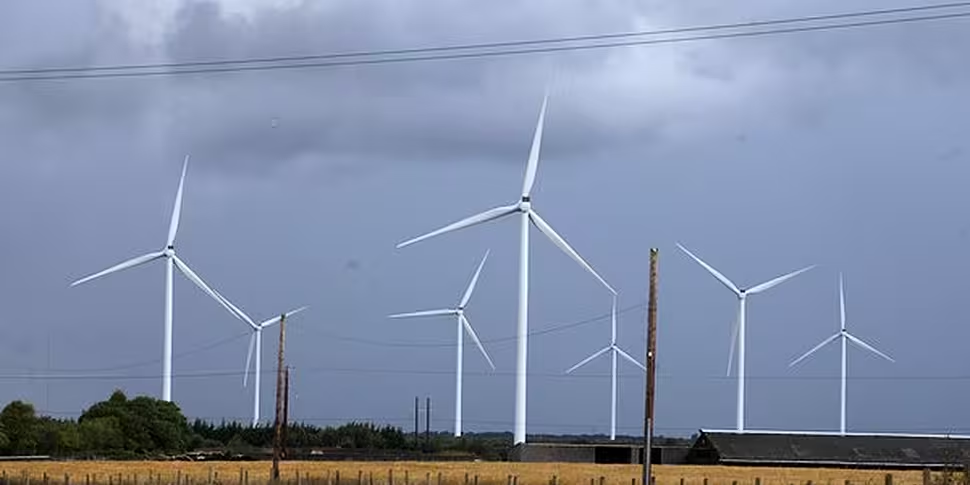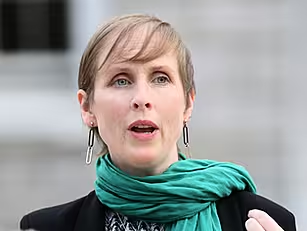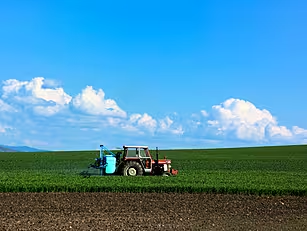The Government's published its new Climate Action Plan, setting out how emissions are to be more than halved by 2030.
The plan sees guideline sectoral targets all across the economy as part of efforts to ease global warming.
This includes electricity, transport, agriculture, industry, buildings and forestry.
The plan follows the Climate Act 2021, which commits Ireland to a legally binding target of net-zero greenhouse gas emissions no later than 2050 - and a reduction of 51% by 2030.
They are set in ranges - but if every department only hits the bottom end of those ranges, the 2030 targets will not be met.
Here are the emission reductions by 2030 by sector:
- Electricity: 62-81%
- Transport: 42-50%
- Buildings: 44-56%
- Industry/Enterprise: 29-41%
- Agriculture: 22-30% reduction
- Land Use, Land Use Change and Forestry (LULUCF): 37-58%
The targets also include having 80% of Ireland's energy be renewable by the end of the decade.
Measures in the plan include 500,000 home retrofits, 680,000 renewable heat upgrades for homes, and changes to rules around building new homes - which would mean fossil fuels are essentially banned.
There are also targets for 500,000 daily additional public transport or active travel journeys.
The Government says it will support the changes through major public investment announced in the National Development Plan.
This includes increased funding for retrofitting homes, building new public transport, re-skilling workers and supporting a just transition.
Key actions by 2030
Among the top measures in the plan are to increase the proportion of renewable electricity to up to 80% by 2030 - including an increased target of up to five gigawatts of offshore wind.
"This will be crucial as we move away from fossil fuels and towards the electrification of transport, heat and other areas", the plan says.
A small-scale generation scheme will also be introduced for farmers, businesses and communities to generate their own electricity and feed this back into the grid.
- Generating electricity from renewable energy:
-By 2030, up to 80% of electricity will be generated using renewable energy, with a mix of 5 GW from offshore wind, 8 GW from onshore wind and 1.5-2.5 GW from solar PV.
Transport measures will include 500,000 extra walking, cycling and public transport journeys per day by 2030.
The pace of EV (electric vehicle) take-up will also be accelerated, to reach almost one million in the private transport fleet by 2030.
Public transport and rail and bus electrification is also to be increased, including 1,500 electric buses and "better rural links."
- Electrification of passenger cars:
-By 2030, we will reach 845,000 passenger EVs, with a focus on BEVs. - Electrification of commercial vehicles:
-By 2030, we will reach 95,000 zero-emissions vans and 3,500 zero-emissions HGVs. - Biofuel blend rates:
-Bioethanol blend rate to reach 10% (E10) by 2030 – to reduce emissions from existing petrol cars.
-Biodiesel blend rate to reach 20% (B20) by 2030 – to reduce emissions from existing diesel cars. - Zero-emission goods and passenger mass transportation:
-By 2030, replacements for bus and rail to be services ‘green’ including, for example, 1,500 EV buses and expanded electrified rail services.
Agriculture
The plan will take "a science-based approach" that improves biodiversity and protects nature.
The Government says it will "give Irish agriculture a a viable future, producing world class food with a lower carbon footprint"
It says the targets for agriculture will help make Irish farms "more carbon efficient" and will be backed by an emphasis on science and robust research.
There will be a reduction in chemical nitrogen and more targeted use of fertiliser - while there is no specific mention of reducing the national herd.
Other measures include improving the genetics of herds to reduce emissions and improve productivity.
The plan says farmers will be "incentivised" to make these changes, and there will be new income streams in areas such as the generation of renewable energy.
"All increases in carbon tax receipts are earmarked for targeted social protection measures, an expansion of retrofitting, particularly for social and low-income homes, and agri-environmental projects", the plan adds.
- GHG-efficient farming practices:
-Increase adoption of practices that are GHG-efficient – across the sector.
-Reducing fertiliser use and increasing the area of multispecies swards. - Diversification of farm activities:
-Exploring the development of a carbon farming model and significantly increasing organic farming. - Biomethane business opportunities:
-Increase biomethane production.













